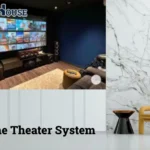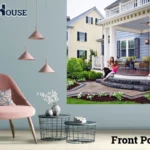Interior design trends 2025 are all about bringing warmth and personality into your living spaces through strategic color choices. This year’s approach focuses on adding vibrant pops of color to brighten your home while maintaining sophisticated, grounding base tones. The shift away from cool grays toward warmer, more inviting palettes reflects our desire for comfort and connection in our personal spaces.
The color landscape for 2025 emphasizes earthy foundations paired with unexpected bright accents. Designers are embracing rich, complex hues that feel both timeless and fresh. These trending colors create spaces that feel lived-in and loved, moving away from sterile minimalism toward homes that truly reflect personality and joy.
Warm Earth Tones as Your Foundation
Earthy neutrals form the backbone of 2025’s color trends, providing the perfect canvas for brighter accents. Warm browns, terracotta, and sage greens create a grounding effect that makes spaces feel instantly more welcoming. These natural tones connect us to the outdoors while providing a sophisticated base for bolder color choices.
Mocha Mousse, Pantone’s Color of the Year, exemplifies this trend with its rich chocolate undertones. This warming brown hue brings comfort and elegance to any room. The color works beautifully on accent walls or through furniture pieces, creating depth without overwhelming the space.
Terracotta continues its rise in popularity, bringing Mediterranean warmth to modern interiors. This earthy orange-red shade pairs beautifully with cream and sage green for a naturally inspired palette. Consider using terracotta through pottery, textiles, or even painted accent walls to add instant warmth.
Sage green and olive tones provide another excellent foundation option for 2025. These muted greens feel fresh yet grounded, working particularly well in bedrooms and living spaces. They create a calming atmosphere while serving as the perfect backdrop for brighter color pops.

Bold Jewel Tones for Statement Pieces
Jewel tones are making a major comeback as accent colors in 2025, adding luxury and sophistication to neutral foundations. Emerald green, sapphire blue, and amethyst purple create stunning focal points when used strategically throughout the home. These rich colors work best in smaller doses through artwork, throw pillows, or statement furniture pieces.
Deep burgundy and oxblood reds are particularly trending this year, moving away from bright tomato reds toward more sophisticated wine tones. These colors add drama and elegance to dining rooms and living spaces. Consider incorporating burgundy through velvet upholstery or rich window treatments for maximum impact.
Emerald green stands out as a particularly versatile jewel tone for 2025. This rich green works beautifully against warm neutrals and can be introduced through plants, artwork, or accent furniture. The color brings life and energy to any space while maintaining an air of sophistication.
Deep navy and midnight blues continue their popularity, offering a classic yet bold choice for accent pieces. These colors work particularly well in home offices and bedrooms, creating a sense of calm while adding visual interest. Navy pairs beautifully with warm metallics and cream tones.
Unexpected Bright Accents
Chartreuse and bright yellows are emerging as the surprise stars of 2025’s color trends. These energetic hues work best as small accent pieces rather than dominant colors. Think throw pillows, artwork, or a single statement chair in these vibrant shades to instantly brighten any room.
Dusty blues offer a softer approach to adding color while maintaining the calming qualities we crave. This muted blue works beautifully in transitional spaces like hallways and kitchens. The color feels both timeless and fresh, making it perfect for those hesitant about bolder choices.
Warm pinks with peachy or brownish undertones are replacing the cooler millennial pink of previous years. These sophisticated pinks work beautifully in bedrooms and home offices, creating a sense of warmth without being overly feminine. Consider using these tones through textiles or painted furniture pieces.
Gentle yellows are gaining popularity as alternatives to stark white walls. These soft, buttery tones bring sunshine into spaces while maintaining sophistication. Yellow works particularly well in kitchens and breakfast nooks, creating an instantly cheerful atmosphere.
Practical Ways to Add Color Pops
Start small when incorporating 2025’s trending colors into your existing decor. Throw pillows, artwork, and accessories offer the easiest ways to experiment with new hues without major commitment. These elements can be easily changed as your preferences evolve or seasons shift.
Consider painting a single accent wall in one of this year’s trending colors for maximum impact. This approach allows you to embrace bold colors while keeping the rest of the room neutral. Choose the wall that naturally draws attention, such as behind a bed or sofa.
Furniture pieces offer another excellent opportunity to incorporate trending colors. A statement chair in emerald green or a coffee table in rich burgundy can transform an entire room’s energy. Look for pieces that serve both functional and aesthetic purposes.
Don’t overlook the power of textiles in adding color pops to your space. Curtains, rugs, and bedding in trending hues can dramatically change a room’s feel. These elements also offer flexibility, allowing you to update your color scheme seasonally or as trends evolve.
Creating Cohesive Color Schemes
The key to successfully incorporating 2025’s color trends lies in creating balance between warm foundations and vibrant accents. Start with one of the trending earth tones as your base, then add two to three accent colors in smaller doses throughout the space.
Consider the natural light in your room when selecting colors. North-facing rooms benefit from warmer tones like terracotta and sage green, while south-facing spaces can handle cooler jewel tones. The goal is creating a harmonious environment that feels both energizing and calming.
Layer different textures and finishes to add depth to your color scheme. Matte paint, glossy ceramics, and textured fabrics in similar hues create visual interest while maintaining cohesion. This approach prevents color schemes from feeling flat or one-dimensional.
Remember that successful color schemes evolve over time. Start with one or two trending colors and gradually add others as you live with the space. This organic approach ensures your home feels authentic and personally meaningful rather than following trends blindly.
The 2025 color trends offer endless possibilities for creating a home that truly reflects your personality and brings daily joy. Whether you start with warm earth tones as your foundation or dive straight into bold jewel accents, remember that the best interior design choices are the ones that make you smile every time you walk through your door. At thisolderhouse, we believe your home should be a place where color and comfort come together to create spaces that feel uniquely yours.




